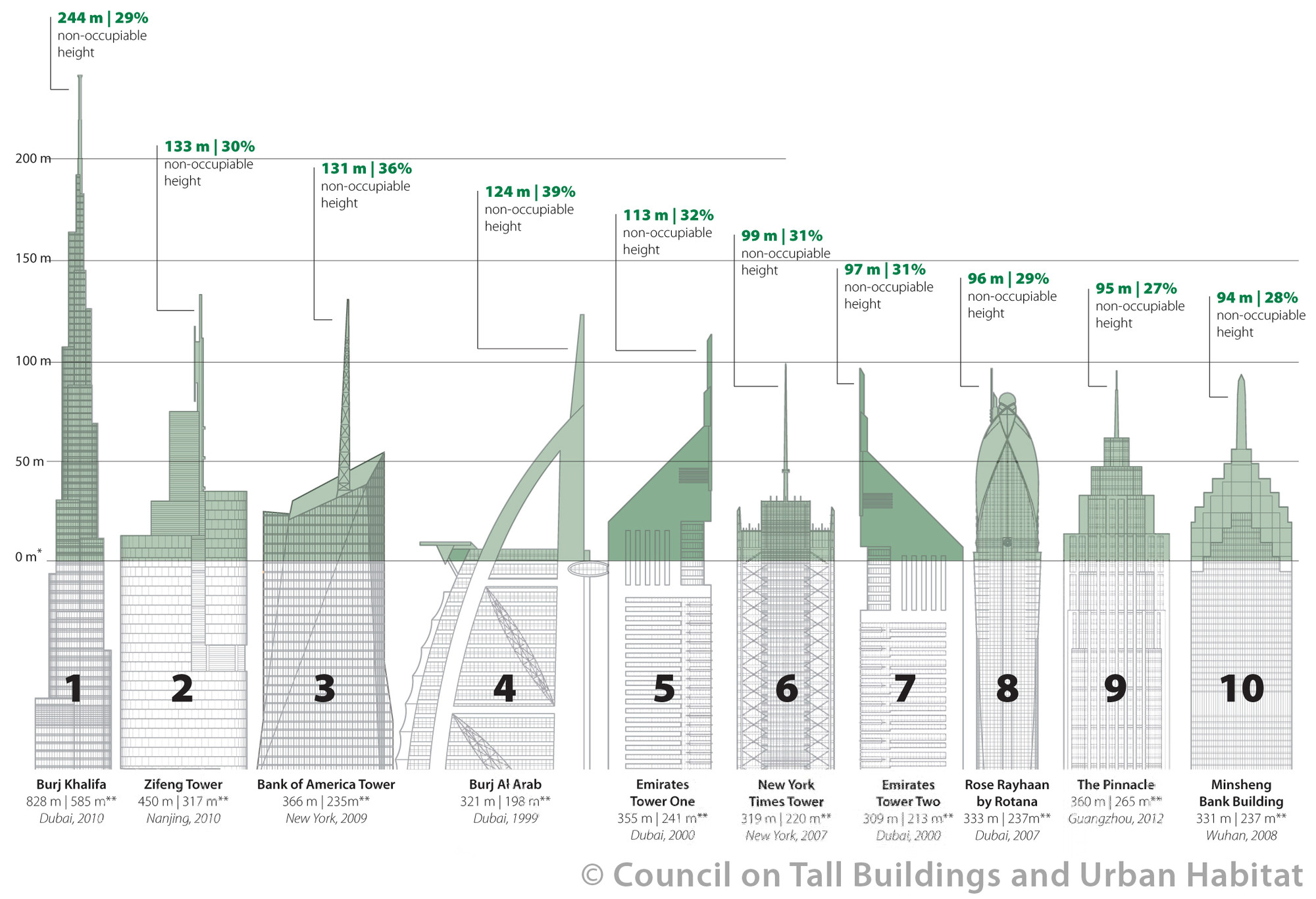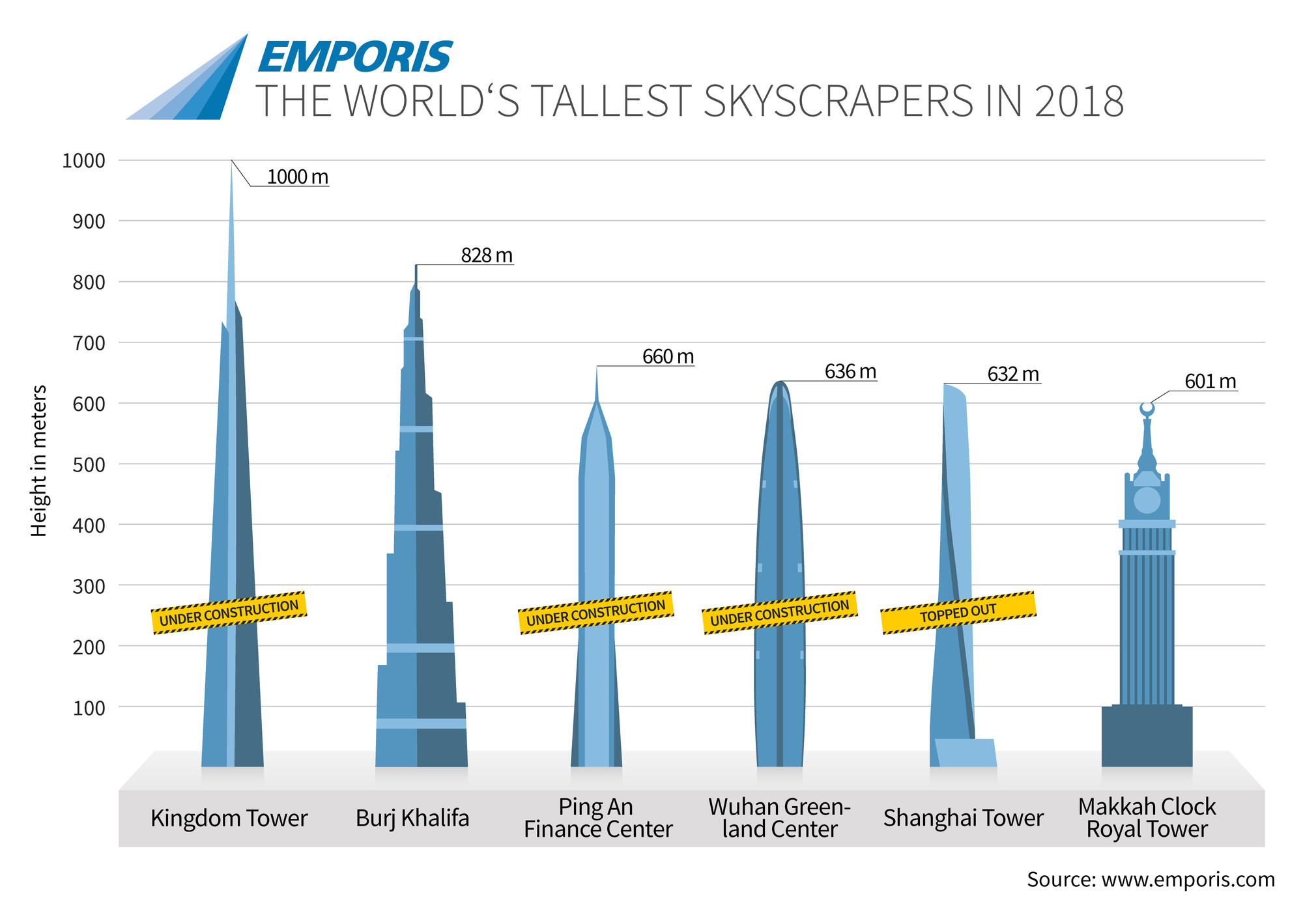
Ever expanding population growth coupled with the continuous development of urban centres mean that buildings, in general, will continue to get taller. With the topping out of One World Trade Centre in May this year the worldwide competition to construct towers with soaring altitudes doesn’t seem to be slowing, especially in China and the UAE. The question on many people’s lips, however, is how much of these colossal buildings is actual usable space?
The Council on Tall Buildings and Urban Habitat (CTBUH), who recently named the Best Tall Buildings for 2013, has published an article tackling the concept of Vanity Height, or "the distance between a skyscraper’s highest occupiable floor and its architectural top." The results demonstrate that many super-skyscrapers have surprisingly uneven ratios between habitable and non-occupiable space.
The CTBUH Height Criteria defines a building as supertall if its height to the ‘architectural top’ is above 300m (984ft). To give some context, the Empire State Building is measured at 373m (1224ft), whereas buildings such as Dubai’s Burj Khalifa, which is measured at 828m (2717ft), are leading the way into the Era of the Megatall. According to the CTBUH, as of July 2013, there are only 73 supertall and 2 megatall buildings in existence.


Dubai’s two tallest buildings both offer interesting statistics. The Burj Khalifa’s total vanity height is 244m which, on its own, would stand as Europe’s 11th tallest skyscraper. The Burj Al-Arab, on the other hand, has “the greatest vanity ratio of any supertall building” with 124m (39%) of its total 321m height “devoted to non-occupiable space above the highest occupiable floor”. The average vanity height in the UAE is 19%, making it the nation with "vainest" supertall buildings. In the USA, the Bank of America tower in New York has an occupied floor height of 235m, leaving 131m (or 36%) non-occupiable. The CTBUH predict that once One World Trade Centre is complete in 2014, New York City will be home to three of the world’s top ten vanity heights.

Although we’re yet to see a building hit the 1000m mark, Emporis have compiled a list of the top ten tallest skyscrapers currently under construction. Three of the tallest in the collection are being built in China, whilst two others (including the Kingdom Tower which is set to hit the 1000m mark, and the Makkah Clock Royal Tower) are in Saudi Arabia. Whether Vanity Height ratios will grow as buildings around the globe compete to be the tallest will be something to watch.
Visit an interactive diagram exploring the history of Vanity Height by the CTBUH. You can read the full article published by CTBUH here (PDF).














